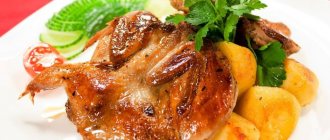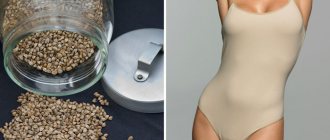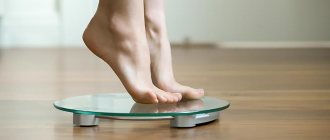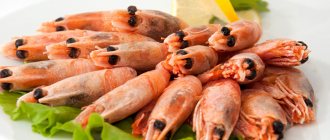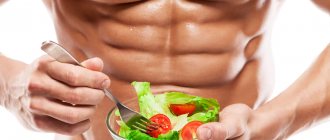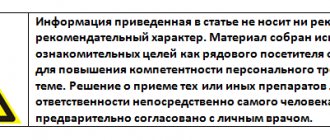The 14-day diet is considered one of the most effective ways to lose weight. Many nutrition systems are designed for 2 weeks, since this time is enough to remove fat and cleanse the body. Long-term diets can harm human health and provoke exacerbation of chronic gastrointestinal pathologies.
General rules
The best option for losing weight is constant proper nutrition and exercise. But it takes time and willpower. There are often situations when you need to lose a certain number of kilograms in two weeks. Two weeks is enough time for your metabolism and the process of weight loss to begin.
However, women set tasks that are beyond the body’s strength and strive to lose 8 kg or, even worse, 15 kg. On the one hand, this is not physiological, on the other, it is simply impossible. During the first week, weight is more or less easily lost, and then the process slows down and enters a plateau stage. Although the rate of weight loss depends on the initial weight and you need to proceed from this - if it is large, then there are cases of weight loss by 15 kg. More often than not, this is a pipe dream. How long does it actually take to lose 10 kilos? Nutritionists do not recommend extreme weight loss, explaining that from a physiological point of view, without harm to health, the optimal weight loss is 500-700 g per week, maybe a little more. Thus, 2-3 kilograms in 2 weeks is the optimal pace for healthy weight loss.
The maximum you can expect in 2 weeks is 6-7 kilograms. To do this, it is enough to reduce caloric intake and increase physical activity. Physical exercises help to quickly eliminate problems with your figure: remove the belly, “ears” on the hips and fat on the back and waist. But losing 10-15 kg during this time is very difficult and impossible. Set achievable tasks. Even if you follow a strict low-calorie diet, the body switches to a mode of economical energy consumption and weight is not lost. There are cases when, by fasting, it is possible to lose weight only in the first week, and then during the next week the body does not lose a single kilogram. In addition, according to medical standards, weight loss of more than 1-3 kg per week is hazardous to health.
However, there are all sorts of diet options available that still guarantee a certain amount of weight loss in a relatively short period of time.
They have a lot in common:
- First of all, it is necessary to limit the diet (the degree of restriction from minimal to significant with a strict indication of the weight of portions), excluding sweet, fatty foods, flour products, spices, and limiting salt.
- Replacing unhealthy foods with dietary ones: raw vegetables and fruits, lean meat, poultry and fish, cottage cheese and all other dairy products with a fat content of 1-1.8%, chickpeas and lentils, whole grain bread (healthy cereals are allowed in some diets).
- Consume 30 g of dietary fiber daily (vegetables, fruits, whole grains, sometimes additional bran).
- Eat a little 4 or more times a day, the last meal is 2 hours before going to bed.
- Do not forget about the water regime (at least 2 liters of purified water per day).
- Cooking dishes without oil (baking, stewing, steaming, boiling).
- Consume fruits up to 12 hours.
- Complex carbohydrates in the form of vegetables up to 16 hours.
- After 19.00 - kefir.
In various diets, only the total calorie content, allowed foods and portion sizes are reduced. The most non-hazardous diet for the body is a light diet for 2 weeks, during which you can lose weight by two kilograms. The minus 2 kg diet in 2 weeks involves limiting the caloric content of the diet to 1400-1500 kcal. The range of products is varied and the food as a whole is tasty and not boring.
- Breakfast options: smoothie made from kefir, baked apple and rolled oats; cottage cheese with cucumber and herbs plus whole grain bread; Adyghe cheese and oatmeal (unsweetened muesli).
- Second breakfasts: pears, plums; egg, tomato and herb salad; carrots and apple; cottage cheese casserole; bread with homemade pate plus vegetables.
- Lunches: baked beef with vegetables; brown rice with tomatoes and green salad; corn porridge with feta cheese and bell pepper; bulgur with eggplant and tomatoes; chicken breast with green beans; rice with pesto sauce and fresh vegetables; fish with vegetables.
- Afternoon snacks: cottage cheese with vegetables and herbs; cottage cheese casserole; cottage cheese with yogurt; bell pepper stuffed with cottage cheese and herbs.
- Dinners: baked chicken breast (turkey with vegetables); beef with vegetables; turkey meatballs with Chinese cabbage salad and olives; squid or other seafood with iceberg lettuce, herbs and tomatoes.
- 2 hours before bedtime - kefir or yogurt.
Minus 2 kg is physiological weight loss during this period. The diet is easy to tolerate, and the lost 2 kg will not be restored if you continue to adhere to proper nutrition. If you support yourself with exercise, you can continue to lose weight.
It is also possible to lose 5 kg in two weeks. As nutritionists explain, 5 kg is an acceptable weight loss during this time. In this case, it is necessary to further reduce the calorie content to 1200-1300 kcal per day and be sure to introduce sports activities. You will have to think through the menu more carefully and strictly adhere to calorie content. To increase your portion size, try to choose foods that are lower in calories:
- Lean fish and seafood should be present in the diet every day. Choose lower-calorie fish and you can eat a 150 g serving: cod (78 kcal per 100 g), hake (95), pollock (79), blue whiting (81), pike perch (97), flounder (103), shrimp (95 ), mussels, squid (109). Do not use fatty fish.
- Turkey, rabbit, chicken, beef, veal. Visible fat and skin are removed. 100 g of these products contain 130-200 kcal.
- Chicken eggs (60 kcal), quail eggs (20 kcal).
- Cereals: buckwheat, pearl barley, barley, millet, oatmeal. Porridge cooked in water contains from 78-132 kcal.
- 1 piece of whole grain flour bread (30 g) - 76 kcal, the same amount of rye bread - 86 kcal.
- Dairy products should be consumed daily, but low in calories. 200 ml of 1% kefir contains 80 kcal, the calorie content of 1.8% cottage cheese is 101 kcal.
- You should alternate different vegetable oils daily to get the most health benefits. You can consume 2 tsp per day. in various dishes. With one teaspoon of the product you will get 50 calories.
- Choose unsweetened fruits and berries: apples, kiwi, grapefruit, pineapple, currants, cranberries, blackberries, blueberries.
- Low-calorie green vegetables: cucumbers, all types of cabbage, zucchini, lettuce, herbs.
- Despite their color, eggplants, peppers, tomatoes, radishes, onions, and asparagus have a low glycemic index. When boiling, the GI increases, so potatoes, pumpkin, carrots and fried zucchini are excluded. If you feel hungry, eat a cucumber and cabbage salad - the most win-win option.
Now it’s not a problem to find the calorie content of other products and even ready-made dishes, so work on creating a menu.
The well-known protein diet also promises weight loss of 5 kg in two weeks, but it is so monotonous and contains an increased amount of protein food that not everyone can handle it. In addition, a protein load is not healthy, since the kidneys, liver will suffer, and constipation , even in people who are not predisposed to it.
Consider a 14-day meal plan that guarantees minus 10 kg. In some cases, by following a very strict diet and constant (4-5 times physical activity), using additional bioactive supplements that increase the effectiveness of diets, it is possible to achieve this result. But know that the diet will be very limited, often alternating with fasting mono days.
- First day: for the whole day you are allowed to eat 5 boiled (baked) potatoes and 3 chicken eggs.
- Second day: 400 ml of kefir and 100 g of cottage cheese.
- Third: 500 ml of kefir, 1 liter of freshly squeezed unsweetened fruit juice and 2 apples.
- Fourth: boiled chicken (beef) in the amount of 400 g, green, herbal tea without sugar.
- Fifth: fasting day on apples 500-600 g.
- Sixth: 3 potatoes, 2 cups of kefir.
- Seventh: 500 ml of kefir.
- Eighth: boiled beef in the amount of 250 g.
- Ninth: 150 g of boiled beef, vegetable salad.
- Tenth: 200 g of beef (chicken), 2 apples, 2 slices of bran bread.
- Eleventh: 150 grams of beef, 2 boiled eggs, 150 g of black bread.
- Twelfth: 700 g of apples, 3 potatoes, two glasses of kefir.
- Thirteenth: 300 g of chicken meat, 2 eggs, 2 cucumbers.
- Fourteenth: two potatoes and two apples.
In general, the diet is unbalanced and extremely low in calories. Calorie content on some days is 200-300 kcal, salt is completely excluded. Such severe restrictions certainly affect well-being and performance. This occurs due to a lack of nutrients that are necessary for the full functioning of the body.
The well-known diet of M. Plisetskaya also provides for losing weight by 10 kg during this period. It includes three main meals and snacks.
- Breakfast: a portion of oatmeal with water.
- Lunch: vegetable soup and a serving of salad.
- Dinner: boiled rice, salad, piece of fish.
For snacks, use one vegetable and one fruit. Eggs, meat, cottage cheese, tomatoes, kefir, and potatoes are excluded. Fish is not eaten every day. There are a variety of vegetables, but the low-calorie legumes are lentils.
The food does not contain protein - fish is not allowed every day and eggs, meat, cottage cheese, and milk are excluded. Within two weeks, muscle tissue will break down.
A diet for 14 days - minus 14 kg poses unrealistic tasks for the body - it turns out that it needs to give up one kilogram every day. Nutritionists insist: “Don’t even try!” Minus 14 kg is an impossible weight loss for the body in such a short period of time. Even if you completely give up food, you can lose 5-6 kg. In this case, more muscle mass will be lost rather than fat deposits, which is dangerous due to serious disturbances in the function of important organs.
When considering any diet, pay attention to the composition of the products and the balance of the diet. Even if in reduced quantities, the diet must contain proteins, fats and carbohydrates.
Diet options
In the above menu of the Japanese diet for every day, experienced “weight losers” and just people watching their diet will immediately see the “pitfalls”.
First of all, skipping breakfast altogether is not for everyone. Many adherents of a healthy diet and athletes are accustomed to a protein-carbohydrate option in the morning. Therefore, it is acceptable to replace tea or coffee with yogurt or a glass of freshly squeezed juice. Of course, this will not completely replace the usual breakfast, but it will fill the stomach and give the body the necessary tone.
Secondly, the diet requires three meals a day. This is another limitation for people accustomed to snacking and split meals. The desire to crunch an apple during breaks is considered a deviation from the diet.
Thirdly, the relatively low vitamin composition of the diet will immediately affect the condition of the skin and hair. Take vitamin complexes immediately after lifting restrictions.
Let's consider possible options for the Japanese diet for different groups of users.
For men
During active physical activity or in the cold season, it is recommended to increase the portions of boiled meat (say up to 200-220 g), and replace fresh salads with vegetables stewed in vegetable oil. In the morning, instead of tea, drink low-fat yogurt, or eat 80-100 g of cottage cheese. This approach will give the body more protein and will allow athletes and people engaged in physical labor to switch to a diet.
© yelenayemchuk — depositphotos.com
For pregnant
In early pregnancy, a gentle version of the diet to cleanse the body is acceptable, but not more than 7 days. Salads and baked/stewed vegetables can be replaced with vegetable soups. In the morning, eat yogurt or low-fat cottage cheese instead of coffee. Don't stop taking vitamins recommended by your doctors.
If you experience any negative sensations (hunger, headaches, etc.), immediately remove all restrictions and consult a doctor.
For vegetarians
Few vitamins and iron are the main disadvantage of a diet for vegetarians. If you replace meat and fish with eggs, or include cottage cheese or yogurt in your breakfast, you will correct the protein imbalance, but you will not be able to get iron and omega-3. We recommend that vegetarians stick to the diet for no more than a week, diversifying the meager cabbage side dishes with legumes, boiled rice, and baked vegetables.
Rice
We will separately discuss the rice diet plan. Brown rice is an excellent absorbent of coarse fiber, absorbing harmful substances. Of course, this is one of the best “cleansers” of the body, but mono-diets made from brown rice are not suitable for everyone.
© ignatius — depositphotos.com
An approximate daily diet looks like this:
- Breakfast: A cup of boiled rice, green tea, unsweetened fruit.
- Lunch: A cup of rice, boiled vegetables (or an egg, or baked fish).
- Dinner: A cup of rice, fresh vegetables with vegetable oil (or an egg).
The rice diet is suitable for quickly losing 2-3 kilograms of weight and cleansing the body. After leaving the diet, gradually include familiar protein foods in the menu and try to balance the dietary protein in your diet.
Banana
Another Japanese diet plan invented by fruit lovers is the banana diet. Sweet, starchy bananas immediately make you feel full: this factor has become the main factor when drawing up a nutrition plan. In the morning you need to eat one, two or three bananas with water or green tea at room temperature. Lunch and dinner are made up of low-calorie dishes, sweets and fatty meats are excluded.
It would seem a simple option, but its adherents talk about high results: in seven days they lose 3 kilograms of weight. But how does this correspond to reality?
These indicators can only be verified experimentally. The results will be individual, depending on the initial weight, eating habits and physical activity.
© HandmadePicture — depositphotos.com
Authorized Products
A two-week diet for weight loss in various variations and quantities involves the use of:
- Low-fat fish and seafood (baked, boiled, stewed).
- Turkey, rabbit, chicken, veal, prepared in the same way as fish dishes.
- Boiled eggs or omelet.
- Whole grain cereals: buckwheat, pearl barley, barley, millet, oatmeal.
- Bread made from whole grain flour or rye.
- Low-fat dairy products, including cottage cheese.
- Various vegetable oils.
- Unsweetened fruits and berries as snacks.
- Vegetables with a low glycemic index : cucumbers, cabbage, raw zucchini, lettuce, greens, eggplant, peppers, tomatoes, radishes, onions, asparagus.
- Filtered water, green tea without sugar.
Table of permitted products
| Proteins, g | Fats, g | Carbohydrates, g | Calories, kcal | |
Vegetables and greens | ||||
| greenery | 2,6 | 0,4 | 5,2 | 36 |
| eggplant | 1,2 | 0,1 | 4,5 | 24 |
| beans | 6,0 | 0,1 | 8,5 | 57 |
| zucchini | 0,6 | 0,3 | 4,6 | 24 |
| cabbage | 1,8 | 0,1 | 4,7 | 27 |
| broccoli | 3,0 | 0,4 | 5,2 | 28 |
| boiled cauliflower | 1,8 | 0,3 | 4,0 | 29 |
| bulb onions | 1,4 | 0,0 | 10,4 | 41 |
| carrot | 1,3 | 0,1 | 6,9 | 32 |
| cucumbers | 0,8 | 0,1 | 2,8 | 15 |
| salad pepper | 1,3 | 0,0 | 5,3 | 27 |
| salad | 1,2 | 0,3 | 1,3 | 12 |
| beet | 1,5 | 0,1 | 8,8 | 40 |
| celery | 0,9 | 0,1 | 2,1 | 12 |
| soybeans | 34,9 | 17,3 | 17,3 | 381 |
| asparagus | 1,9 | 0,1 | 3,1 | 20 |
| tomatoes | 0,6 | 0,2 | 4,2 | 20 |
| Jerusalem artichoke | 2,1 | 0,1 | 12,8 | 61 |
| pumpkin | 1,3 | 0,3 | 7,7 | 28 |
| beans | 7,8 | 0,5 | 21,5 | 123 |
| garlic | 6,5 | 0,5 | 29,9 | 143 |
| lentils | 24,0 | 1,5 | 42,7 | 284 |
Fruits | ||||
| avocado | 2,0 | 20,0 | 7,4 | 208 |
| oranges | 0,9 | 0,2 | 8,1 | 36 |
| pomegranate | 0,9 | 0,0 | 13,9 | 52 |
| grapefruit | 0,7 | 0,2 | 6,5 | 29 |
| pears | 0,4 | 0,3 | 10,9 | 42 |
| kiwi | 1,0 | 0,6 | 10,3 | 48 |
| lemons | 0,9 | 0,1 | 3,0 | 16 |
| mango | 0,5 | 0,3 | 11,5 | 67 |
| tangerines | 0,8 | 0,2 | 7,5 | 33 |
| nectarine | 0,9 | 0,2 | 11,8 | 48 |
| peaches | 0,9 | 0,1 | 11,3 | 46 |
| apples | 0,4 | 0,4 | 9,8 | 47 |
Berries | ||||
| gooseberry | 0,7 | 0,2 | 12,0 | 43 |
| Red currants | 0,6 | 0,2 | 7,7 | 43 |
| black currant | 1,0 | 0,4 | 7,3 | 44 |
Nuts and dried fruits | ||||
| nuts | 15,0 | 40,0 | 20,0 | 500 |
| cashew | 25,7 | 54,1 | 13,2 | 643 |
| sesame | 19,4 | 48,7 | 12,2 | 565 |
| flax seeds | 18,3 | 42,2 | 28,9 | 534 |
| fenugreek seeds | 23,0 | 6,4 | 58,3 | 323 |
| sunflower seeds | 20,7 | 52,9 | 3,4 | 578 |
Cereals and porridges | ||||
| buckwheat (kernel) | 12,6 | 3,3 | 62,1 | 313 |
| oat groats | 12,3 | 6,1 | 59,5 | 342 |
| cereals | 11,9 | 7,2 | 69,3 | 366 |
| millet cereal | 11,5 | 3,3 | 69,3 | 348 |
Raw materials and seasonings | ||||
| honey | 0,8 | 0,0 | 81,5 | 329 |
Dairy | ||||
| skim milk | 2,0 | 0,1 | 4,8 | 31 |
| natural yogurt 2% | 4,3 | 2,0 | 6,2 | 60 |
Cheeses and cottage cheese | ||||
| cottage cheese 0.6% (low fat) | 18,0 | 0,6 | 1,8 | 88 |
| curd tofu | 8,1 | 4,2 | 0,6 | 73 |
Meat products | ||||
| beef | 18,9 | 19,4 | 0,0 | 187 |
| rabbit | 21,0 | 8,0 | 0,0 | 156 |
Bird | ||||
| chicken fillet | 23,1 | 1,2 | 0,0 | 110 |
| turkey | 19,2 | 0,7 | 0,0 | 84 |
Fish and seafood | ||||
| fish | 18,5 | 4,9 | 0,0 | 136 |
| squid | 21,2 | 2,8 | 2,0 | 122 |
| mussels | 9,1 | 1,5 | 0,0 | 50 |
| seaweed | 0,8 | 5,1 | 0,0 | 49 |
Oils and fats | ||||
| butter | 0,5 | 82,5 | 0,8 | 748 |
| linseed oil | 0,0 | 99,8 | 0,0 | 898 |
| olive oil | 0,0 | 99,8 | 0,0 | 898 |
| sunflower oil | 0,0 | 99,9 | 0,0 | 899 |
Non-alcoholic drinks | ||||
| mineral water | 0,0 | 0,0 | 0,0 | — |
| green tea | 0,0 | 0,0 | 0,0 | — |
| * data is per 100 g of product | ||||
Fully or partially limited products
As with any standard diet aimed at weight loss, the following are excluded:
- Fatty meats, animal fats, fried foods.
- Smoked meats, canned food, sausages.
- Fatty dairy products.
- Baked goods, bakery products made from refined flour, sugar, sweets, jam, condensed milk, etc.
- Salt consumption is limited.
Table of prohibited products
| Proteins, g | Fats, g | Carbohydrates, g | Calories, kcal | |
Vegetables and greens | ||||
| radish | 1,2 | 0,1 | 3,4 | 19 |
| white radish | 1,4 | 0,0 | 4,1 | 21 |
| red radish | 1,2 | 0,1 | 3,4 | 20 |
| black radish | 1,9 | 0,2 | 6,7 | 35 |
| spinach | 2,9 | 0,3 | 2,0 | 22 |
| sorrel | 1,5 | 0,3 | 2,9 | 19 |
Fruits | ||||
| bananas | 1,5 | 0,2 | 21,8 | 95 |
Berries | ||||
| grape | 0,6 | 0,2 | 16,8 | 65 |
Mushrooms | ||||
| mushrooms | 3,5 | 2,0 | 2,5 | 30 |
Nuts and dried fruits | ||||
| raisin | 2,9 | 0,6 | 66,0 | 264 |
Cereals and porridges | ||||
| semolina | 10,3 | 1,0 | 73,3 | 328 |
| white rice | 6,7 | 0,7 | 78,9 | 344 |
Flour and pasta | ||||
| pasta | 10,4 | 1,1 | 69,7 | 337 |
Confectionery | ||||
| jam | 0,3 | 0,2 | 63,0 | 263 |
| jam | 0,3 | 0,1 | 56,0 | 238 |
| candies | 4,3 | 19,8 | 67,5 | 453 |
| pastry cream | 0,2 | 26,0 | 16,5 | 300 |
| cookie | 7,5 | 11,8 | 74,9 | 417 |
Ice cream | ||||
| ice cream | 3,7 | 6,9 | 22,1 | 189 |
Cakes | ||||
| cake | 4,4 | 23,4 | 45,2 | 407 |
Chocolate | ||||
| chocolate | 5,4 | 35,3 | 56,5 | 544 |
Raw materials and seasonings | ||||
| mustard | 5,7 | 6,4 | 22,0 | 162 |
| mayonnaise | 2,4 | 67,0 | 3,9 | 627 |
Dairy | ||||
| milk 3.6% | 2,8 | 3,6 | 4,7 | 62 |
| milk 4.5% | 3,1 | 4,5 | 4,7 | 72 |
| cream | 2,8 | 20,0 | 3,7 | 205 |
| sour cream 25% (classic) | 2,6 | 25,0 | 2,5 | 248 |
Cheeses and cottage cheese | ||||
| cheese | 24,1 | 29,5 | 0,3 | 363 |
| cottage cheese 11% | 16,0 | 11,0 | 1,0 | 170 |
| cottage cheese 18% (fat) | 14,0 | 18,0 | 2,8 | 232 |
Meat products | ||||
| pork | 16,0 | 21,6 | 0,0 | 259 |
| pork liver | 18,8 | 3,6 | 0,0 | 108 |
| pork kidneys | 13,0 | 3,1 | 0,0 | 80 |
| pork fat | 1,4 | 92,8 | 0,0 | 841 |
| salo | 2,4 | 89,0 | 0,0 | 797 |
| beef liver | 17,4 | 3,1 | 0,0 | 98 |
| beef kidneys | 12,5 | 1,8 | 0,0 | 66 |
| beef brains | 9,5 | 9,5 | 0,0 | 124 |
Sausages | ||||
| smoked sausage | 16,2 | 44,6 | 0,0 | 466 |
| smoked sausage | 9,9 | 63,2 | 0,3 | 608 |
| sausages | 10,1 | 31,6 | 1,9 | 332 |
| sausages | 12,3 | 25,3 | 0,0 | 277 |
Bird | ||||
| smoked chicken | 27,5 | 8,2 | 0,0 | 184 |
| duck | 16,5 | 61,2 | 0,0 | 346 |
| smoked duck | 19,0 | 28,4 | 0,0 | 337 |
| goose | 16,1 | 33,3 | 0,0 | 364 |
Fish and seafood | ||||
| smoked fish | 26,8 | 9,9 | 0,0 | 196 |
| salted fish | 19,2 | 2,0 | 0,0 | 190 |
| Red caviar | 32,0 | 15,0 | 0,0 | 263 |
| black caviar | 28,0 | 9,7 | 0,0 | 203 |
| canned fish | 17,5 | 2,0 | 0,0 | 88 |
| cod (liver in oil) | 4,2 | 65,7 | 1,2 | 613 |
Oils and fats | ||||
| animal fat | 0,0 | 99,7 | 0,0 | 897 |
| cooking fat | 0,0 | 99,7 | 0,0 | 897 |
Non-alcoholic drinks | ||||
| instant coffee dry | 15,0 | 3,5 | 0,0 | 94 |
| black tea | 20,0 | 5,1 | 6,9 | 152 |
| * data is per 100 g of product | ||||
What is the Japanese diet?
The goal of the Japanese diet, like many other nutrition programs, is to eliminate excess fat mass. The main advantage of the method is the long-term effect: if you follow the rules of a healthy diet, the extra pounds will not return. Most readers are interested in the question: where does the name come from if there are no traditional Japanese dishes on the menu? There is no exact information about the authors of the diet and the origin of the name. It is generally accepted that the Japanese diet is called because of its basic principles: the diet excludes fats and harmful carbohydrates and is based on protein and low-carbohydrate foods.
The menu of residents of the Land of the Rising Sun is dominated by fish and seafood, brown rice, and soy products. The Japanese are very moderate in their eating: they eat small portions, avoid sweets, animal fats and fast food. The calorie content of dishes on the average Japanese menu is about 1800 kcal, which is 20% less than the diet of Europeans - this parameter also formed the basis of the diet.
The absence in the Japanese menu of desserts familiar to Europeans - cakes, sweet buns, muffins and chocolate - also affects slimness and longevity. A traditional Japanese dessert is fresh fruit. Miniature tea cakes here are made without sugar and decorated with berries. The Japanese diet is based on a complete abstinence from sweets, pure sugar, honey, and baked goods. At the same time, the menu contains fruit desserts made from fresh berries and seasonal fruits, which is good for both your figure and your health.
Different sources suggest different foods for the Japanese diet. We will stick to the common and practice-tested menu.
© tarczas — depositphotos.com
Diet menu for 14 days (diet mode)
Here is a menu that, if followed for two weeks, can result in weight loss of 10 kg. Three meals a day are provided. If you feel hungry, you can drink kefir or eat unsweetened fruit. Spices and seasonings that stimulate the appetite are not used when preparing dishes.
| Breakfast |
|
| Dinner |
|
| Dinner |
|
| Breakfast |
|
| Dinner |
|
| Dinner |
|
| Breakfast |
|
| Dinner |
|
| Dinner |
|
| Breakfast |
|
| Dinner |
|
| Dinner |
|
| Breakfast |
|
| Dinner |
|
| Dinner |
|
| Breakfast |
|
| Dinner |
|
| Dinner |
|
| Breakfast |
|
| Dinner |
|
| Dinner |
|
| Breakfast |
|
| Dinner |
|
| Dinner |
|
| Breakfast |
|
| Dinner |
|
| Dinner |
|
| Breakfast |
|
| Dinner |
|
| Dinner |
|
| Breakfast |
|
| Dinner |
|
| Dinner |
|
| Breakfast |
|
| Dinner |
|
| Dinner |
|
| Breakfast |
|
| Dinner |
|
| Dinner |
|
| Breakfast |
|
| Dinner |
|
| Dinner |
|
Efficiency
The effect of the Japanese diet depends on many factors: a person’s health, his level of activity, discipline, and metabolic characteristics.
Of course, strict adherence to the menu and diet has an effect: people lose from 2 kg in 7 days to 10 kilograms in a full two-week cycle. However, the first weight loss is due to the removal of fluid and waste. If you see minus two kilos on the scales in the first three days of the diet, do not celebrate your victory: the weight may return.
Every diet is a temporary result. As soon as the restrictions stop, the excess weight returns. The Japanese diet retains a longer-lasting effect than its analogues, but subject to restructuring the diet and changing eating habits.
If after a diet you start bingeing on cakes and sweets, all previous efforts and restrictions will be in vain: your body weight will even exceed the initial one. It is also important to observe the general nutritional culture: eat in small portions, control the process of saturation and do not overeat. Only a healthy lifestyle and the right menu will maintain the results achieved and give the desired effect from the Japanese diet!
Recipes for healthy eating
Curd cheese rolls with cucumber
- 2.5 g Protein
- 1.3 g Fat
- 4.4 g Carbohydrates
- 38.7 kcal
20-25 min.
- #bell pepper
- #vegetarian dish
- #dietary
- #breakfast
- #olives
- #low calorie
- #dinner
- #vegetables
- #cucumber
- #parsley
- #holiday dish
- #dinner
Other recipes
Advantages and disadvantages
| pros | Minuses |
|
|
Reviews and results
The quick results of losing weight do not last long. According to statistics, only a few manage to maintain the results; the rest who lose weight return to their original weight within a few months when switching to their usual diet. Lose weight correctly and quickly. Now there is a lot of information on proper nutrition, which will allow you to lose weight without compromising your health.
- “... I am not a supporter of such extreme starvation diets. I always thought that it was better to lose weight slowly and gradually. But circumstances so happened that when applying for a job, it was necessary to lose weight. On the Plisetskaya diet, I was able to achieve a weight loss of 7 kg. This is certainly a lot, but ten, as promised, did not work out. An unrealistically difficult diet, although I did not follow it strictly - I introduced eggs, meat for lunch, cottage cheese and kefir. I worked out a little in the pool, but mostly walked. These two weeks were very difficult for me: I was constantly hungry, dizzy, I was breaking down with or without reason. I will never allow myself to abuse my body like that again. The only plus is that this kind of nutrition has restructured my future diet towards proper nutrition.”
- “... Like the New Year or any holiday, the pursuit of beauty begins among the girls from my work. Beauty requires sacrifice, but you also need to be healthy. You must constantly take care of yourself, since it is very easy to get fat, but getting back into shape is much more difficult. You don’t need to believe in fairy tales - you can lose so much weight in just 2 weeks. Just think how dangerous it is to lose 10 kg in a short time. Not only will everything sag, your face will age, but also health and hormonal problems will begin. I managed to lose so much weight in just 2 months by giving up flour, cereals, sweets and reducing the amount of salt. And then I think that I lost weight quickly - approximately 4.5 kg per month.”
Sports during the Japanese diet
When choosing a Japanese diet for weight loss, you should not increase your usual level of physical activity. The athlete's body is subject to stress during restrictions, and increased stress can worsen the condition.
It is recommended to exercise as usual and closely monitor your well-being. Each diet has its own characteristics, and the Japanese is no exception. A lack of vitamins and a poor breakfast can affect the athlete’s tone, so check with your sports doctor for any changes in diet.
If your sports regime is limited to a morning jog or weekly workouts in the pool or fitness room, then in combination with the Japanese diet the body will receive the necessary dose of stress and the weight loss process will be more effective.
To summarize: with the Japanese diet, the best activity option is moderate yoga, swimming or fitness classes. Professional athletes are advised to monitor their health during intensive periods and adjust their loads.
© pressmaster — depositphotos.com

